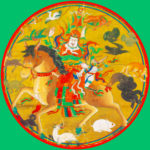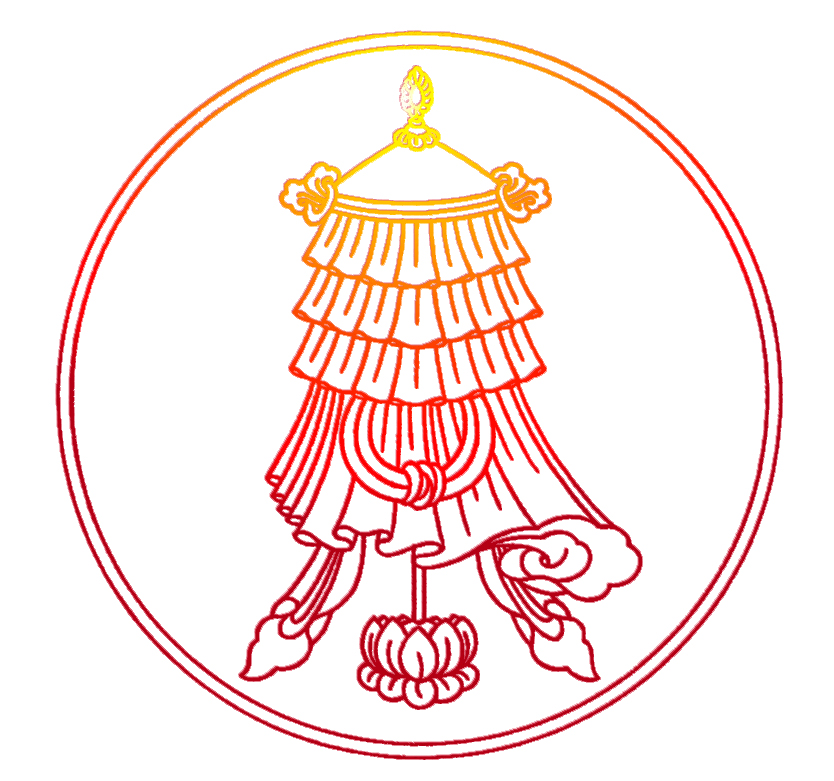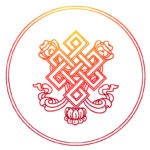
Reports From The Mandala
Head Lama of TNMC

Over the past decade, the Nyingma Mandala of Organizations has expanded dramatically and in unexpected ways. Existing organizations have continued their activities on behalf of the Dharma and all sentient beings, typically intensifying their efforts. At the same time, at least nine new organizations have been formed, adding new dimensions to the founding Head Lama’s vision.
In the reports that follow, we lay out recent developments throughout the mandala and introduce the work of our new organizations. We start with the work of TNMC, where the Head Lama is most directly involved: Yeshe De, Odiyan, the Light Foundations, and the Sarnath Institute. From there we move on to describe the structure and mission of the Nyingma Association of Mandala Organizations (NAMO), founded in 2011.
We go on to lay out the recent work of the organizations that belong to NAMO. As a structure for presenting this wealth of developments, we start with the organizations located in Sonoma County, then turn to developments in Berkeley, and finally report on the expanding efforts of our international centers, under the direction of Nyingma Centers.
Mandala Organizations In Berkeley
Nyingma Mandala of Organizations had its beginning in Berkeley in 1969, when Rinpoche founded the Tibetan Nyingma Meditation Center. In 1971, TNMC moved into its new home, an old fraternity house that Rinpoche named Padma Ling, Land of the Lotus. Padma Ling remains a center of community activity as a residence and place of practice and the site of ongoing art projects and editorial work. Its ample gardens are tended as an offering to the Dharma, and its stalwart bear statue, left behind by the fraternity, has been adopted as a Dharma protector.
The next development came in 1972, when Rinpoche founded the Nyingma Institute in another old fraternity house on the other side of the University campus. Active briefly at Padma Ling, the Institute moved to its present location the next year. We start our reports on the Berkeley mandala organizations with the Institute, which has now flourished as a gateway to the Dharma for more than four decades.
In 2009, the mandala expanded into downtown Berkeley. We had been looking for over a year for a new home for the Tibetan Aid Project, which had occupied the same building as Dharma Publishing and the Yeshe De Project prior to their move to Ratna Ling. In 2008, the opportunity arose to purchase two adjoining buildings in the heart of Berkeley. Although far grander in scale than what we had been looking for, the new buildings offered remarkable opportunities to develop new petals of the mandala. Renovated in secret for nine months as a surprise for the larger community, the buildings witnessed opening celebrations in the summer of 2009.
Mangalam Centers, a 26,000 square foot building next to the main Berkeley post office, built in 1913 and a Berkeley landmark, became the home of the Mangalam Research Center for Buddhist Languages; it also houses a grand temple, office and residential space, and common facilities for dining, community events, and instruction. In addition, it serves as the headquarters for Light of Buddhadharma Foundation, the Center for Creative Inquiry, and NAMO. The smaller building next door became the home for the Tibetan Aid Project, the Dharma Publishing Bookstore, Nyingma Trust, a work space for the Prayer Flag Project, and (initially), the Guna Foundation. In 2010, another opportunity arose—this time to purchase the large building next to the Tibetan Aid Project Building. Known as Armstrong College (later, Armstrong University), it was over eighty years old, also a Berkeley landmark and built by the architect responsible for Mangalam Centers. Because it had been designed for use as a business college, it was perfectly suited for expanding the educational dimension of the mandala. Rinpoche named it Dharma College. After extensive renovation, Dharma College celebrated its opening in 2011. Soon after, it became the new home of the Guna Foundation, which moved from next door. It features a vast public space that Rinpoche lovingly prepared as temple capable of seating hundreds, as well dining facilities and a large lower level that is currently used mostly for storage.
Mandala Organizations In Berkeley
Nyingma Trust
In Tibet, most spiritual practitioners were monks or nuns. They lived in monasteries or retreat centers linked to villages whose residents thought it a great blessing to be able to offer financial support for the fulltime religious practitioners in their midst. In this country, of course, no such tradition exists. This creates a real challenge for our community, which mostly relies on the efforts of long-term volunteers who donate their time and energy without compensation to accomplish the goals of the mandala. Rinpoche has been aware of this difficulty from the outset, and we continue to look for ways to address it. This is the function served by Nyingma Trust
Nyingma Trust is the successor to a project known for many years as the Nyingma Student Fund, established to help support the group of practitioners working under the spiritual guidance of Tarthang Rinpoche. Although students live simply, we do have needs that must be addressed. This simple fact grows ever more undeniable as the community ages and our physical capacities decline.
The Nyingma community came into existence at a time of growing interest in Tibetan Buddhism in the late 1960s and throughout the 1970s. Many of its members have been active in the community since that time, and they are now reaching what society at large would consider retirement age. Looking around at one another, the senior members can see clearly that our need for support will only increase as the years pass by.
The aim of Nyingma Trust is to build up substantial savings to ensure that this community of devoted practitioners can safely and securely continue their study and practice of the teachings of the Nyingma tradition and maintain the structures and projects that have been established under the founding Head Lama. The funds raised by the Trust support our longevity as a strong community that maintains the vision that Tarthang Rinpoche has set in motion, and that finds new ways to offer the Dharma to the world. For many years the Trust focused strongly on providing health insurance, but recent changes in the laws on medical insurance have helped reduce that burden. Still, there are many other issues to deal with and many real needs that require access to greater funding.
A key vehicle for the Nyingma Trust to raise funds is a series of events known as Trust Walks. Held four times a year on especially important days in the Tibetan religious calendar, the Trust Walks give members of the extended community the opportunity to donate funds and in return receive prayers directed as they wish: prayers on behalf of someone they love or for their own well-being or health, for the success of a project or undertaking, for a cause close to their hearts or for peace and balance in the world.
The Four Great Celebrations For 2014
March 16: Display of Miracles (Chotrul Duchen)
June 13: Buddha’s Enlightenment & Parinirvana (Saga Dawa Duchen)
July 31: Turning the Wheel of the Dharma (Chokhur Duchen)
November 13: Descent from the Heavens (Lha Bab Duchen)
On the morning of a Trust Walk members of the Odiyan community circumambulate the Odiyan Stupa with requests from donors in hand, praying for the positive fulfillment of each wish. Horns and conch shells sound, and the ringing of the Odiyan Stupa bell evokes the powers of nature and the blessings of the lineage. Step by step practitioners walk, hearts open, minds focused, joining their wishes with those who have asked to be part of the celebration.
The Nyingma Trust maintains a website at www.nyingmatrust.org. In the near future, we hope to reach out more actively to the hundreds of people whose lives have been touched by the teachings of the Nyingma lineage and the presence of Tarthang Rinpoche among us, expanding our mission to include their spiritual needs. We look for your support, but we also have the firm intention to find ways to share our own practice and its benefits with the larger community.
More From This Issue



Grounds For Understanding
Grounds For Understanding Claudio Naranjo Claudio Naranjo was a student